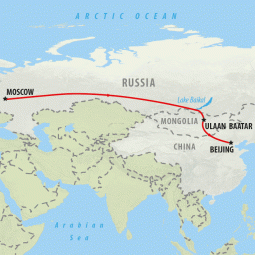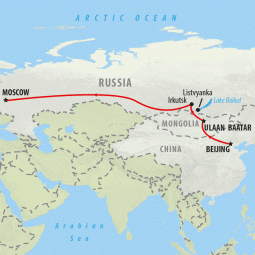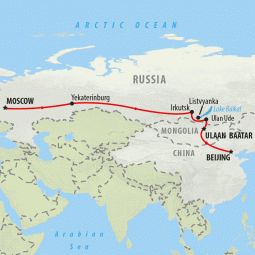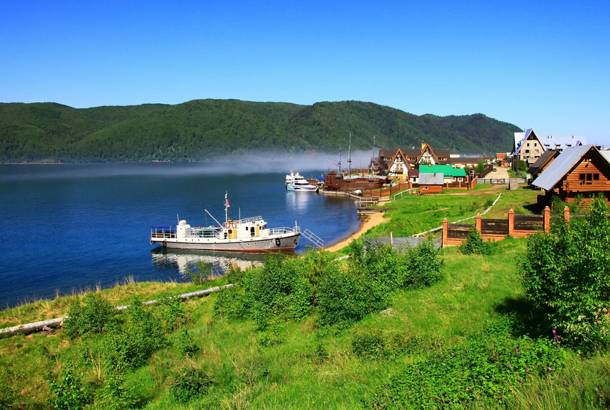
Trans-Siberian Railway At a Glance: Best Time to Visit
Recommended time to travel: This is a tricky question because it depends which leg of the railway you are travelling on! Generally, summer from June - August and autumn from September - October see pleasant temperatures across Russia, Mongolia and China. Though it is worth bearing in mind that it can get hot in summer, especially whilst trying to sleep on a train. So autumn is probably your best bet!
Less popular time to travel: Winter from December - February brings bitter temperatures across the entire length of the railway, particularly in Mongolia, where temperatures can drop to -15 degrees Centigrade. The region does look spectacular and wild at this time of year though, and the train will be warm and comfortable. Plus, activities such as snowmobiling are possible at this time of year, and has anybody ever looked cold whilst riding a snowmobile?
Best time for travelling through Russia: May - September sees pleasant weather along the Russian portion of the railway, with snow and bitter temperatures lasting from October until February, when spring brings the big thaw.
Best time for travelling through Mongolia: Mongolia has an extreme climate - long, hot, dry summers and bitterly cold winters, with a very short spring and autumn in between. Summer from May - August is probably optimal travel time, with the weather at its most travel-friendly.
Best time for travelling through China: Summer is hot and wet and winter is bitterly cold on the journey to Beijing. Spring from March - May and autumn from September - November see mild, drier weather, perfect for travel.
Seasons and Weather
What's the climate like in Russia?
In European Russia, summer days from late May to early September are warm and very long. At midsummer in St Petersburg there is no real darkness. Average temperatures range from 18-25 C. Autumn is brief and by the end of October, winter sets in, bringing with it lots of snow and extremely low temperatures. Spring arrives with a vengeance, heralding the great thaw, in late March and April.
What's the climate like in Mongolia?
Mongolia experiences four very distinct seasons with winter lasting from November to February, spring from March to May, summer until August and autumn during September and October. Summer is peak travel season when the weather is fine. The sunshine can be intense with almost zero humidity and occasional cloud cover. August is the wettest month of the year though by September and October the temperatures are cool, the rain eases up and the changing colours make for spectacular scenery. November sees the onset of the incredibly cold but dry winter months when snow often blankets the ground.
What's the climate like in China?
The autumn months of September to early November are a wonderful time to visit Beijing and northern China when the skies are clear and the days breezy. The winter months of late November to February are cold and windy yet the occasional snows can make the city look beautiful when it settles over the Great Wall and other historical monuments. Spring is dry, warm and hazy, and temperatures surge from May onwards. Late summer sees heavy rainstorms with July and August the wettest months of the year.

Best Time to Travel on the Trans-Siberian Railway
Why travel on the Trans-Siberian Railway in summer?
The various trains that make up the Trans-Siberian and Trans-Mongolian railway journey depart throughout the year so you can plan your journey for any month. Travelling in the summer months mean hotter weather and longer days of sunshine, perfect for sightseeing in the cities and trekking around Lake Baikal. The trains do have air-conditioning that is handled by the train attendants with small window openings along the corridors so temperature control on board is not a problem. Travelling between April and September is also a better option for those who prefer to travel light as fewer layers of clothing are required and a sleep sheet is sufficient, rather than a heavy sleeping bag.
Why travel on the Trans-Siberian Railway in winter?
For many travellers, the quintessential Trans-Siberian railway journey wouldn't be complete without frost on the windows while huddling down with a shot of vodka to warm you up as the snow piles high outside. Temperatures drop below freezing in the winter months and snow is common throughout Russia, Mongolia and even northern China. The trains are heated and bedding provided so the train journey itself will be nice and comfortable though it will mean bringing heavier and thicker clothing items with you. In winter you can try your hand at dog sledding or ice skate on the waters of Lake Baikal.
Why travel on the Trans-Siberian Railway in spring or autumn?
The spring and autumn months have plenty to offer also with flowers coming into bloom and decorating the countryside while the leaves turn golden hues after the height of summer. Outdoor activities abound during these months with trekking particularly popular.
Climate | Moscow
| Jan | Feb | Mar | Apr | May | Jun | Jul | Aug | Sep | Oct | Nov | Dec | |
|---|---|---|---|---|---|---|---|---|---|---|---|---|
| Temp Min °C | -16 | -14 | -8 | 1 | 8 | 11 | 13 | 12 | 7 | 3 | -3 | -10 |
| Temp Max °C | -9 | -6 | 4 | 10 | 19 | 21 | 23 | 22 | 16 | 9 | 2 | -5 |
| Rainfall (mm) | 39 | 38 | 36 | 37 | 53 | 58 | 88 | 71 | 58 | 45 | 47 | 54 |
Climate | Ulaan Baatar
| Jan | Feb | Mar | Apr | May | Jun | Jul | Aug | Sep | Oct | Nov | Dec | |
|---|---|---|---|---|---|---|---|---|---|---|---|---|
| Temp Min °C | -32 | -29 | -22 | -8 | -2 | 7 | 11 | 8 | 2 | -8 | -20 | -28 |
| Temp Max °C | -19 | -13 | -4 | 7 | 13 | 21 | 22 | 21 | 14 | 6 | -6 | -16 |
| Rainfall (mm) | 1 | 2 | 3 | 5 | 10 | 28 | 76 | 51 | 23 | 5 | 5 | 5 |
Climate | Beijing
| Jan | Feb | Mar | Apr | May | Jun | Jul | Aug | Sep | Oct | Nov | Dec | |
|---|---|---|---|---|---|---|---|---|---|---|---|---|
| Temp Min °C | -10 | -8 | -1 | 7 | 13 | 18 | 21 | 20 | 14 | 6 | -2 | -8 |
| Temp Max °C | 1 | 4 | 11 | 21 | 27 | 31 | 31 | 30 | 26 | 20 | 9 | 3 |
| Rainfall (mm) | 4 | 5 | 8 | 17 | 35 | 78 | 243 | 141 | 58 | 16 | 11 | 3 |
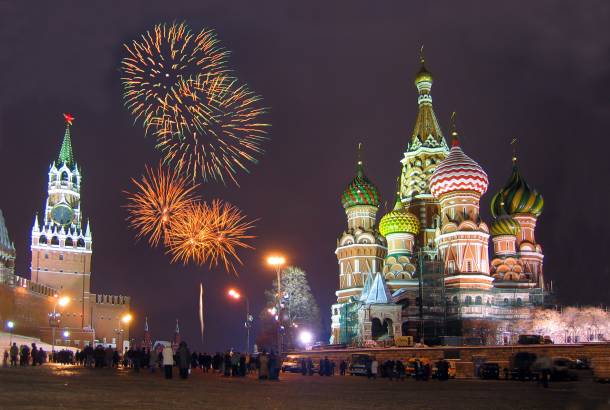
Festivals and events on the Trans-Siberian Railway
Stretching almost 10,000km across some of the most extreme landscapes in the world, the Trans-Siberian railway is an experience unlike any other. Yet, what makes the journey so special isn't just riding the train - the rest comes from what you can see and do along the way. With each city you stop off in comes new cultures and what better way to explore these than by witnessing or taking part in one of their festivals. Here is our round up of the top festivals and events that take place along the route of this epic voyage.
Festivals and events in Russia
Maslenitsa
Roughly translating as ‘Butter Week’, this festival is celebrated all over Russia and involves all kinds of festivities. Traditionally, pancakes are consumed while citizens throw street parties, go sleigh-riding and take to the frozen lakes for a bit of ice skating. The festival finds its roots in religion as it was originally a time for people to prepare for Lent but nowadays it is celebrated by everyone regardless of faith. The event also was originally meat-free but fewer people every year adhere to this rule.Maslenitsa - February / March
New Year's Eve
The fireworks display held at Moscow's Red Square every new year has become legendary and it's the best place along the Trans-Siberian route to celebrate the occasion. It's also one of the most important events on the calendar for Russian families with people coming together for large feasts and many of the traditions we normally associate with Christmas are a common feature of the day.New Year's Eve - December 31st
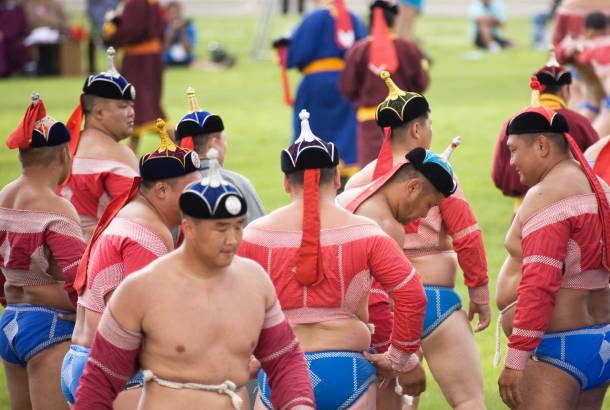
Festivals and events in Mongolia
Nadaam Festival
The Nadaam Festival is the number one event of the year in Mongolia and sees the entire country erupt into celebration for 3 days. The word Nadaam literally translates as “three manly games” and these three games are wrestling, archery and horse riding. The participants in the horse racing are usually children between the ages of about five and twelve who ride with the skill and grace of a professional jockey. It is quite a sight to behold. In recent years, women have been allowed to enter all events bar wrestling. The official opening and closing ceremonies are held in the capital of Ulaan Bataar, the best place to witness the games.Nadaam Festival – July
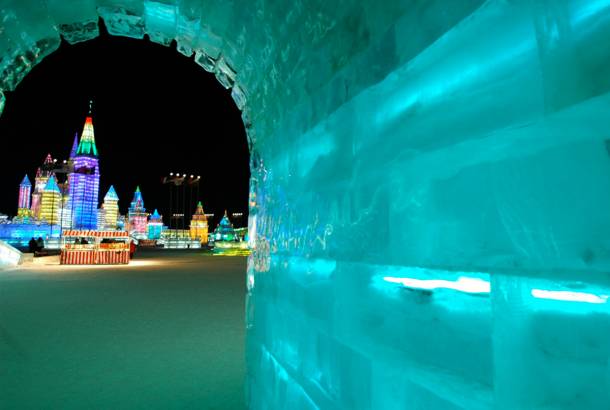
Festivals and events in China
Chinese New Year
Also referred to as the Spring Festival, the Chinese New Year is the most important celebration of the year in China with festivities taking place for 15 days. During this time, families are reunited as workers take a week off and children get a month off of school. Traditional red decorations, which symbolise good fortune and prosperity in the coming year, are put up and fireworks explode across the sky. People in Beijing usually eat dumplings during the festival as, again, they signify prosperity.Chinese New Year – January / February
Harbin Ice Festival
Those planning a Trans-Siberian adventure in the winter months should consider timing their departure from Beijing, or arrival into Beijing, during the Harbin Ice Festival. An easy train ride from the capital, the city of Harbin becomes a winter wonderland as Zhaolin Park is filled with incredible ice sculptures created by some of the world's most talented sculptors. It's the largest of its kind with the bitterly cold weather perfect for maintaining the hundreds of neon-lit exhibits and fun slides made entirely out of ice.Harbin Ice Festival - January / February
Recommended tours
See Also
To help plan your adventure on the Trans-Siberian Railway, check out these handy travel guide resources:
Best Places to Visit - our top 10 stops along the journey
Tourist Visas - all you need to know before you go
Top Travel Tips - time zones, currency, health advice and more
Planning your Journey - essential information to help you plan your route
Getting Tickets - for travelling with children, as a group and more useful info
Style of Travel -what to expect on our Trans-Siberian Railway Packages
Accommodation options - from standard hotels to authentic homestays
Traveller Reviews - here's what our past travellers had to say about their experiences
